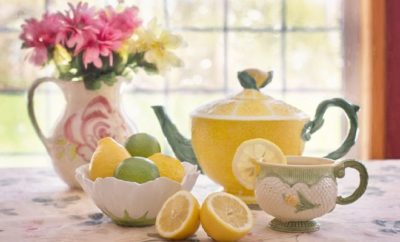
Health x Wellness
“Liquid Gold” Mānuka Honey
Long before sugar became widely available in the 16th century[1], honey was the world’s principal sweetener. These days it is common to find a plethora of different types of honey, Mānuka Honey, commonly known as “liquid gold”, being one of the more popular ones. But what makes Mānuka Honey so special?
How does it differ in look and taste?
Instead of a thin, clear and golden texture of regular honey, Mānuka Honey is of a darker shade of cream, tan or dark brown with a thicker viscosity. Unlike traditional honey, which is a blend from various hives and flowers species[2], Mānuka Honey is predominantly from the nectar of one plant species – New Zealand’s native Mānuka Bush (also known as tea tree) – making it a mono-floral honey.
A mouthful of Mānuka Honey is an experience. It is unique, strong, sweet and full flavoured, with a slight bitter taste towards the end. As the quality of the Mānuka Honey increases, so does the intensity of its colour and distinctive taste.
Additionally, Mānuka Honey is a popular option for healing wounds, approved by the U.S. Federal Drug Administration in 2007 as a recommended option for wound treatment[3]. Yes, you can apply Mānuka Honey to your child’s wound if he or she comes back home with a small abrasion on their body!
Premium-priced Mānuka Honey
The relatively high price tag of a bottle of Mānuka Honey can be a shock to most people. Locally, a bottle of Haddrell’s of Cambridge Mānuka Honey costs between SGD76.50 to SGD205 at Nature’s Farm, depending on its quality and purity.
Why is the price steeper in comparison to traditional honey? Authentic New Zealand Mānuka Honey is a very limited resource. The Mānuka Bush only flowers for a few weeks each year, and the bushes bloom in remote, difficult to reach locations. Our beekeepers undertake great efforts to find those locations and place beehives at the best areas, those with denser Mānuka bushes. That’s how we provide the best Mānuka Honey. What’s more, premium quality Mānuka Honey such as Haddrell’s of Cambridge Mānuka Honey also goes through extensive testing in order to prove its authenticity[4].

Spotting authentic Mānuka Honey
The high value of Mānuka Honey has led to some suppliers selling untested, uncertified honey as Mānuka. So how do you tell the authentic from the counterfeit? Authentic Mānuka Honey is native only to New Zealand and specific regions in Australia, the same from other countries are usually fakes.[5]
The next thing to observe is grading. There are various Mānuka Honey grading system; the UMF™ rating is the most universally accepted method. UMF™ stands for Unique Mānuka Factor™ and is presented by the Unique Mānuka Factor™ Honey Association (UMFHA), a third party New Zealand organisation.
Customers are guaranteed of genuine and high quality Mānuka Honey when purchasing brands that have the UMF™ registered trademark and number. The grading system appraises three key natural markers found in Mānuka Honey; Methylglyoxal (MG), Dihydroxyacetone (DHA) and Leptosperin. The UMF™ label assures consumers of the purity and quality of the Mānuka Honey[6], unlike some other grading systems that measure only one marker. Haddrell’s of Cambridge has been a UMF™ member since its foundation in the early 1990s and its products are UMF™-certified.
The higher the UMF™ number, the greater the quality and purity. Haddrell’s of Cambridge Mānuka Honey is graded based on its UMF™, ranging from UMF™ 5+ to UMF™ 22+.
Ways to indulge Mānuka Honey
Mānuka Honey is very versatile and there are plenty of ways to enjoy it. Having a spoonful at breakfast can be a tasty way to start the day. Otherwise, pair it with your breakfast menu, such as pancakes, croissants or breakfast cereals. My sons, Matthew and Ben Haddrell, love spreading Mānuka Honey on their toast.
Haddrell’s of Cambridge Mānuka Honey does not contain cholesterol or fat and is a great natural alternative to sugar and sweetener. Use it when baking, or add it to your coffee or tea. Mānuka Honey is also great in salad dressings and smoothies. Whether to kick start a busy day, or a mid-day pick-me-up treat, Mānuka Honey is the perfect companion to complement your food choices.
This article is attributed to Moira Haddrell, Co-founder & Brand Ambassador, Haddrell’s of Cambridge

References:
[1] https://www.livescience.com/37611-what-is-honey-honeybees.html
[2] https://www.luriegarden.org/2016/10/14/appreciate-honeys-variety/
[3]https://journals.lww.com/jwocnonline/Abstract/2009/01000/Honey_Based_Dressings_and_Wound_Care__An_Option.8.aspx
[4] https://www.truehoney.co.nz/en/2017/03/30/why-is-manuka-honey-so-expensive/
[5] https://wildnaturals.com/blogs/blog/fake-manuka-honey-is-going-rampant-how-to-spot-the-real-liquid-gold
[6] http://www.umf.org.nz/grading-system-explained/








